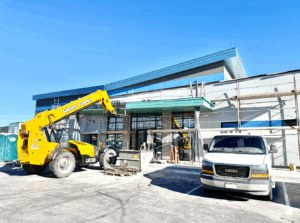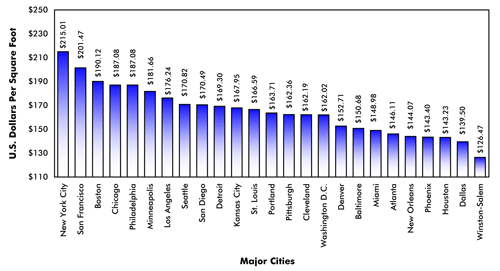The industrial sector is rapidly evolving, with new trends in building design significantly impacting productivity and efficiency. As architects, integrating these science-based design features is essential for creating industrial environments that meet functional needs and promote optimal performance.
Sustainable and Energy-Efficient Industrial Building Design
Sustainability is at the forefront of modern industrial building design, particularly for owner-occupants. Incorporating energy-efficient systems and sustainable materials not only reduces operational costs but also minimizes environmental impact. Solar panels, energy-efficient HVAC systems, and LED lighting can cut energy consumption significantly. According to the U.S. Green Building Council, green buildings can reduce energy use by 30% to 50% and water use by 30% . Using recycled materials and implementing waste reduction strategies further contribute to a sustainable industrial environment. For tenant properties, owners and developers are less incentivized to provide these features due to up front costs, however some have incorporated them into creative leasing structures and also unique financing strategies including tax credit financing or taking advantage of location specific opportunities, like CPACE financing in Colorado, where they can offset initial costs or capture the downstream economic benefits of lower operating costs.
Infrastructure for Electric Vehicle (EV) chargers is also gaining attention and providing additional amenities for some projects. These can also be profit centers for owners who can charge for the power consumption on site. Some jurisdictions are also requiring “EV ready” developments, so owners are evaluating how best it can add value to their projects and their tenants.
Advanced Automation and Smart Technology
The integration of automation and smart technology is transforming industrial buildings. Automated systems for lighting, heating, and security improve operational efficiency by allowing remote control and real-time adjustments. Smart sensors monitor equipment performance and environmental conditions, enabling predictive maintenance and reducing downtime. The Internet of Things (IoT) facilitates real-time data collection and analysis, optimizing production processes and resource management (McKinsey & Company, 2020).
Flexible and Modular Spaces
Flexibility is crucial in industrial design, allowing spaces to adapt to changing needs. Modular construction techniques enable rapid reconfiguration to accommodate different production lines or storage requirements. Movable walls, adjustable mezzanines, and modular offices provide the versatility needed in a dynamic industrial environment. This adaptability enhances operational efficiency and extends the facility’s lifespan (World Green Building Council, 2021). The cost of mezzanines can be relatively high, so we always evaluate the cost and benefit trade-offs for our clients.
Human-Centric and Ergonomic Design
Ergonomic design is essential for enhancing worker productivity and well-being. Ergonomic workstations, proper lighting, and climate control systems reduce physical strain and fatigue. A study by the National Institute for Occupational Safety and Health (NIOSH) found that ergonomic improvements could lead to a 25% increase in productivity and a 60% reduction in workplace injuries (NIOSH, 2018). Creating comfortable and safe working conditions boosts efficiency and improves employee satisfaction and retention.
Biophilic Elements and Natural Lighting
Incorporating biophilic design elements, such as natural lighting, green walls, and indoor plants, can significantly improve the well-being and productivity of workers. Natural light enhances mood, increases alertness, and reduces headaches and eye strain. A study by Cornell University found that workers in environments with natural elements reported a 15% higher level of well-being and a 6% increase in productivity (Cornell University, 2018) . Integrating these elements into industrial spaces creates a more pleasant and health-promoting work environment. Many developers will incorporate skylights in the design, which add natural light into a warehouse environment cost effectively.
Enhanced Safety Features
Safety is paramount in industrial design. Advanced safety features, such as automated emergency systems, non-slip flooring, and clear signage, prevent accidents and ensure a safe working environment. The use of robotics and automation for hazardous tasks further enhances safety by reducing human exposure to dangerous conditions. Improved safety measures can lead to a significant reduction in workplace accidents and associated costs, according to the Occupational Safety and Health Administration (OSHA, 2020).
Conclusion
Incorporating these emerging trends and science-based design features into industrial buildings can significantly enhance productivity, efficiency, and worker well-being. As architects, staying informed about these advancements and applying them can create state-of-the-art industrial spaces. By embracing these innovations, we can design facilities that meet operational needs and support a sustainable and productive future.










